predictive maintenance
description: determining the condition of in-service equipment in order to estimate when maintenance should be performed
20 results

Four Battlegrounds
by
Paul Scharre
Published 18 Jan 2023
abstract_id=3792071. 207predictive maintenance tool for helicopters: The Robotics Institute, Carnegie Mellon University, “Carnegie Mellon AI Collaborates with Pentagon to Improve Reliability of Army’s Black Hawk Helicopters,” news release, February 3, 2021, https://www.ri.cmu.edu/carnegie-mellon-ai-collaborates-with-pentagon-to-improve-reliability-of-armys-black-hawk-helicopters/; “JAIC Partners with USSOCOM to Deliver AI-Enabled Predictive Maintenance Capabilities,” Joint Artificial Intelligence Center, December 17, 2020, https://www.ai.mil/news_12_17_20-jaic_partners_with_ussocom_to_deliver_ai-enabled_predictive_maintenance_capabilities.html; Sydney J. Freedberg Jr, “Fix It Before It Breaks: SOCOM, JAIC Pioneer Predictive Maintenance AI,” Breaking Defense, February 19, 2019, https://breakingdefense.com/2019/02/fix-it-before-it-breaks-socom-jaic-pioneer-predictive-maintenance-ai/; Shanahan, interview. 207“That’s fantastic that we did that for one engine”: Nand Mulchandani, interview by author, May 12, 2020. 207“We empower your workforce”: Raj, interview. 207cloud-based AI platform called the Joint Common Foundation: Joint Artificial Intelligence Center (website), 2019, https://www.ai.mil/. 208the JAIC worked to accelerate the process: “A Roadmap to Getting ‘AI-Ready,’” Joint Artificial intelligence Center, June 18, 2020, https://www.ai.mil/blog_06_18_20-a_roadmap_to_getting_ai_ready.html. 25.
…
Department of Defense.” 196“actually, it was a small problem from their perspective”: Brown, interview. 196DIU expanded C3 AI’s predictive maintenance work: C3.ai, “US Defense Department Awards C3.ai $95M Contract Vehicle to Improve Aircraft Readiness Using AI,” news release, January 15, 2020, https://c3.ai/us-defense-department-awards-c3-ai-95m-contract-vehicle-to-improve-aircraft-readiness-using-ai/; Philong Duong, “AI-Based Predictive Maintenance to Enhance Readiness, Reduce In-Flight Failures,” C3.ai blog, July 21, 2020, https://c3.ai/blog/predictive-maintenance-to-enhance-readiness-reduce-in-flight-failures/. 196over $280 billion annually in operations and maintenance: Office of the Under Secretary of Defense (Comptroller)/ Chief Financial Officer, Operation and Maintenance Overview: Irreversible Implementation of the National Defense Strategy (US Department of Defense, 2020), 2, https://comptroller.defense.gov/Portals/45/Documents/defbudget/fy2021/fy2021_OM_Overview.pdf. 196DIU has expanded their predictive maintenance work: Artificial Intelligence Initiatives; “DIU Making Transformative Impact Five Years In.” 197Navy ship maintenance: Office of the Under Secretary of Defense (Comptroller), National Defense Budget Estimates for FY 2021 (U.S.
…
In fact, machine learning systems are often so narrowly constrained by the datasets on which they’ve been trained that their performance can often drop if they are used for tasks that are not well-represented in the training data. For example, a facial recognition system may perform poorly on people of races or ethnicities that are not adequately represented in its training data. A machine learning algorithm used for predictive maintenance on one aircraft won’t work on another aircraft—it would need to be retrained on data for the new aircraft. It may not even be effective at predicting maintenance needs on the same aircraft in a new environment, since maintenance needs may differ based on environmental conditions, such as in a desert where sand can clog parts or in a maritime environment where there is saltwater corrosion.

Frugal Innovation: How to Do Better With Less
by
Jaideep Prabhu Navi Radjou
Published 15 Feb 2015
Specifically, they should use the model’s five key performance indicators (KPIs) – costs, assets (which measures efficiency), reliability, responsiveness and agility (which measures adaptability) – to do so, giving equal weight to all five. Companies also need to flex their service assets. They can use predictive maintenance methods to anticipate and deal with customer needs, even before they occur, saving money and boosting loyalty. For instance, Northrup Grumman, one of the world’s largest defence contractors, has built a predictive maintenance system that enables US Air Force technicians to predict cracking on their aircraft weeks before these cracks even become visible to the naked eye – thus avoiding costly repairs and potentially saving the lives of military pilots.
…
When the system detects any deviation from key indicators, such as humidity, temperature or fan speed, it automatically readjusts the machinery, thus avoiding costly interruptions. Manufacturers should also continually collect and analyse such industrial data to improve performance and anticipate maintenance issues. The US Department of Energy reckons that this predictive maintenance approach can reduce maintenance costs by up to 30%, machine breakdowns by 75% and downtime by 35–45%, while increasing production by 25%. Decentralise supply chains with smaller, nimbler factories Decentralised supply chains, whereby production happens as close as possible to the point of consumption, will help bridge the supply– demand gap.
…
This detailed data can be monitored remotely from a website, smartphone or tablet. This affordable, easy-to-use system has several benefits. It acts as a GPS by precisely identifying the good and bad parts of a field, thus helping farmers optimise their use of crops, water, energy, fertiliser and labour, and as a predictive-maintenance tool by warning farmers when there is a looming problem with soil conditions or environment (such as too little light or water). Despite these clear benefits, Joop Verbaken, gThrive’s co-founder, says that it is not easy to convince farmers to make the switch:11 Initially farmers were sceptical about our solution – because adopting it meant changing their business model.
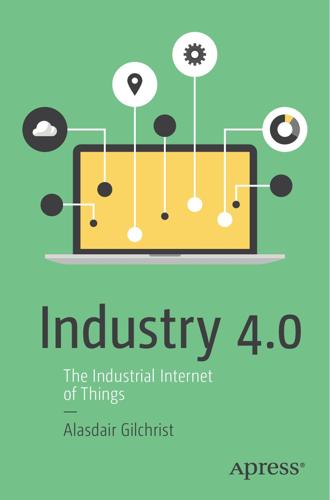
Industry 4.0: The Industrial Internet of Things
by
Alasdair Gilchrist
Published 27 Jun 2016
Fortunately, using Big Data to reap the benefits of analytics to improve operational processes appears to be akin to picking the low hanging fruit; it’s easily obtainable. Typically, most industrial companies head straight for the predictive maintenance tactic as this ploy returns the quickest results and return on investment. Some examples of this are the success experienced by Thames Water, the largest fresh-drinking water and water-waste recycler in the UK. It uses the IIoT for remote asset management and predictive maintenance. By using a strategy of sensors, remote communication, and Big Data analytics, Thames Water can anticipate equipment failures and respond quicker to any critical situation that may arise due to inclement weather.
…
Industry 4.0 Big Data and advanced analytics as we have seen are another key driver and enabler for the IIoT as they provide for historical, predictive, and prescriptive analysis, which can provide insight into what is actually happening inside a machine or a process. Combined with these new breed of self-aware and self-predicting components analytics can provide accurate predictive maintenance schedules for machinery and assets, keeping them in productive service longer and reducing the inefficiencies and costs of unnecessary maintenance. This has been accelerated by the advent of cloud computing over the last decade whereby service providers like AWS provide the vast compute, storage, and networking capabilities required for effective Big Data at low cost and on a pay-what-you-use basis.
…
The Business Domain The business domain enables integration and compatibility between Industrial Internet system functions and enterprise business systems such as ERP (enterprise resource management), CRM (customer relationship management), WSM (warehouse stock management), and many others. As an example, a predictive maintenance service for a fabrication yard may have historical and predictive analytics on past and probable failure rates on welding equipment, which allows them to forecast likely failures. By integrating their ERP systems, they can ensure stock is always at hand and reserved for the customer. Implementation Viewpoint The implementation viewpoint is probably the most interesting aspect of the IIRA as it involves technology rather than business or usage functions.
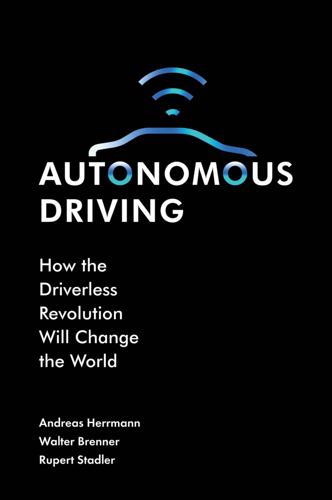
Autonomous Driving: How the Driverless Revolution Will Change the World
by
Andreas Herrmann
,
Walter Brenner
and
Rupert Stadler
Published 25 Mar 2018
Thanks to the interconnectivity that results from automating cars, the servicing garage and manufacturer will have access to a lot of the data collected in the vehicle. Consequently, they might be able to track things such as mileage, condition of the tires and fan belt, oil levels (in combustion engines) or battery levels (in electric cars), and thus be able to schedule predictive maintenance appointments. This greatly reduces the risk of the car breaking Time, Cost and Safety 303 Box 29.2. Statement by Carol Flannagan Carol A. Flannagan, Co-Director, Center for the Management of Information for Safe and Sustainable Transportation at the University of Michigan Autonomous cars will considerably reduce the number and severity of accidents.
…
Advantages of Autonomous Driving in Comparison with Human Driving (Cars) Vehicle throughput 500 per cent more throughput Fuel economy 50 300 per cent improvement of fuel economy Infrastructure 30 per cent improvement in fuel economy Operating costs Lower parking costs Lower insurance costs Lower fuel costs Land use 30 40 per cent less land needed for streets and parking Safety Fewer accidents due to V-to-V and V-to-I communication Time Less time needed to destination because of travel management, lower traffic volume and route selection Time spent in car used for other activities instead of driving Convenience Predictive maintenance Fewer breakdowns Relief from routine trips Elderly, ill or disabled people can become more mobile Electric cars The technology of autonomous driving improves the efficiency of electric cars and helps make them more widespread Source: The authors. K e y T a ke a w a y s Studies show that the lane capacity (vehicles per lane per hour) can be increased by up to 500 per cent with autonomous vehicles.
…
Connected vehicles will also supply large volumes of data such as driving patterns, digital service usage, vehicle condition and touch-point contacts, some of which can actually be analysed in real time. These data can be used for a number of applications, such as the development of V-to-home and V-to-business applications, preventive and predictive maintenance, and concierge and entertainment services. In addition, the data resulting from V-to-V and V-to-I communication will allow traffic flows in cities to be optimised. This will yield useful information for infrastructure planning, for the coordination of public and private transport and for the redesign of inner cities.
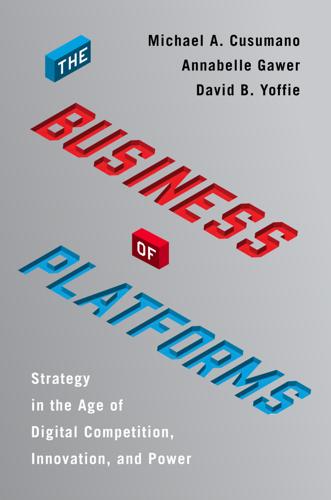
The Business of Platforms: Strategy in the Age of Digital Competition, Innovation, and Power
by
Michael A. Cusumano
,
Annabelle Gawer
and
David B. Yoffie
Published 6 May 2019
For example, a wind farm could use data to optimize its production by allowing turbines to rotate in order to harness more wind power. Incorporating this type of data analytics, a 100-megawatt wind farm could increase energy production by 20 percent and produce an additional $100 million over the farm’s lifetime, according to a GE report.58 Another major application was predictive maintenance—using the analysis of sensor data to predict when a piece of equipment is about to break down and repair it before it malfunctions. Former CEO Jeffrey Immelt believed that data and analytics could add a substantial layer of value to GE’s businesses. If one of GE’s existing competitors or a third-party software firm developed a winner-take-all platform that captured that analytics layer, GE could be forced to join the platform and cede a great deal of the value of its equipment, including maintenance services, to the owner of the platform.
…
See platform failures mistiming as platform failure, 129–35 mistrust, especially in transaction platforms, 119–24 MIT Sloan Management Review, viii Moore’s law, 49 Motorola Mobility, 87 Mozilla, 125, 126 multi-homing (multiple platforms for the same purpose) overview, 25, 41–44 digital technology impact, 52–54 on quantum computers, 229 in video game arena, 44 multisided markets overview, 71 choosing your market sides, 69–71 engaging multiple sides of a market, 15–16, 41–42 future expectations, 219, 231–32 response of older industries to digital platforms, 159–60 telephone service as, 34 multisided platforms building on side to attract the other side, 75 social networks as, 71 strategy, 68, 183 National Geographic (magazine), 230–31 National Labor Relations Board, 195 negative network effects, 16–17 Netscape Navigator, 125 network effects overview, 13–14, 25, 59–60, 249n18, 249n19 Alibaba’s, 124 barriers to entry created by, 48 digital technology impact, 50–52 generation of, 16–18 with instant messaging, 41–42 Metcalfe’s law dynamic, 35, 35f as positive feedback loops, 13, 16, 32, 59, 75 and quantum computing, 228 of telephone network, 32–37 of Yellow Pages, 32–33, 37–41, 253n12 See also barriers to entry; differentiation and niche competition; multi-homing network externalities, 249n18, 252n5 Network World (magazine), 125 New York City and Uber, 118 next-generation platforms, 219 niche companies, 46, 55–56 Nintendo, 43–44 Nishi, Kazuhiko “Kay,” 3 Nokia’s Symbian, 79–80, 130, 131 nonlinear increases in utility and value, 13 Numenta, 69 Oasis (home rental platform), 142 Onefinestay, 142 one-sided platforms building one side to attract other sides, 75–76 social networks as, 71 telephone service as, 34 Open Handset Alliance (Google), viii, 45–46 openness and curation tradeoff, 191 Open Platform Initiative (Lyft + automakers), 225–26 open source software, 125–26 OpenTable, 84–85 PaaS (platform-as-a-service), 163 Palm personal digital assistant (PDA) app store, 96 Pandora, 135 Parker, Geoffrey, 82–83, 111 Path, 110 patterns in platform failures, 108–12, 242t, 243t Paul, Sunil, 113, 117, 118 PC Magazine, 131, 133–34 PCWorld (magazine), 127 personal computers (PCs) as platform vs. product business, 5–6 value of platforms associated with, 21–22, 23t, 24–25, 251nn23–24 Pharmapacks, 145–47 photographers hired by Airbnb, 75 PHV (private hire vehicle) operators in London, 148–50 physical platforms, 12 Pivotal Cloud Foundry, 162–63 platform-as-a-service (PaaS), 163 platform businesses overview, 11, 12–15, 49, 248n14 accepting their roles in modern society, 213 build vs. buy decision, 169–71 centralization of power, 235 core principles overview, 214–17, 215t decisions that drive network effects, 33 durability of, 213–14 enabling “asset-light” business models, 60, 192 generating revenue without a product or service, 17 hybrids as next phase in evolution of, 103–4 and industrial Internet of things, 161–62 next-generation platforms, 219 platform vs. product in a platform market, 5–6, 14 specialized retail platforms, 55 start-up costs, 57 successful techniques, 60 traditional rules related to, 11–12 See also network effects platform failures (common mistakes), 105–38 overview, 26–27, 107–8, 135–38 hubris, 124–29, 137–38 learning from mistakes, 136 mispricing on one side of the platform, 112–19 mistiming, 129–35 mistrust, especially in transaction platforms, 119–24 and network effects, 136–37 overly complicated platform fails to scale, 67–68 patterns in, 108–12, 242t, 243t platform governance, 173–209 overview, 27–28 anticipating antitrust and competition concerns, 180–85 balancing openness with trust, 185–91 mood change in business environment, 176–80 power and platforms, 175–76 responsibility and liability for activities on the platform, 178–79 self-regulating, 199–206 threats from megaplatforms, 177–80 workforce issues, 192–99 See also governments and regulations platform leaders, neutrality of, vii–viii Platform Leadership: How Intel, Microsoft, and Cisco Drive Industry Innovation (Cusumano, Gawer, and Yoffie), vii–viii, 10–11 platform market drivers, 29–62 overview, 25, 31–32, 49–50, 59–61 See also barriers to entry; differentiation and niche competition; multi-homing; multisided markets; network effects platform potential and future scenarios, 217–37 overview, 28, 217–20 CRISPR, 229–34 quantum computing, 226–29 voice recognition, 220–23 Platform Revolution (Parker, Van Alstyne, and Choudary), 82–83 platforms, four steps to building, 66–93 overview, 66–67, 67f choose your market sides, 67–71 design your business model, 77–85 establish and enforce ecosystem rules, 85–93 solve the “chicken-or-egg” problem, 71–77 platform thinking, 4, 5–6 Porter, Michael E., 42 positive feedback loops, 13, 16, 32, 59, 75. See also network effects power and platforms overview, 175–76, 217, 219 awareness of potential for abuse, 208–9 centralization of power, 235 global power of digital platforms and ecosystem companies, 8–9 pursuing growth without abusing power, 206–7 predictive maintenance with industrial Internet, 161 Predix (GE’s platform for the industrial Internet), 161–69 attracting an ecosystem of third-party developers, 164–65 competitors, 166–67 Digital Foundries for innovators, 164–65 GE’s reasons for, 161–62 investing in AWS and Azure clouds, 163 looking to the future, 167–69 monetization, 165–66 as open innovation software, 103, 164–65 Pivotal Cloud Foundry as base, 162–63 platform governance and use of data, 165 strategy, 162 time-out and new focus on applications, 167 pricing overview, 43–44, 81 Apple iPhone, 24, 46 and barriers to entry, 47 eBay’s failure to price like Taobao, 124 Microsoft licensing DOS at low prices, 4, 40 mispricing on one side of the platform, 112–19 by Uber, 81–82, 115, 136 utilizing bots to guarantee lowest prices, 145, 146 private hire vehicle (PHV) operators in London, 148–50 product platforms, 12–13, 20 Pyramid Research, 133 Qualcomm, 48 Quantum Circuits, 227 quantum computing, 226–29 railroads in the United States, 32–33 regulations.

Thank You for Being Late: An Optimist's Guide to Thriving in the Age of Accelerations
by
Thomas L. Friedman
Published 22 Nov 2016
GE now also knows that if you have to run your engine at 120 percent on a hot day, certain parts will need to have their predictive maintenance moved up. “We are constantly enriching and training our nervous system, and everyone benefits from the data,” said Ruh. But it’s not only the learning you can do with sensors and software; it’s also the transforming you can do with sensors and software together. Today, explained Ruh, “we no longer need to build physical changes into every product to improve their performance, we just do it with software. I take a dumb locomotive and throw sensors and software into it, and suddenly I can do predictive maintenance, I can make it operate up and down the tracks at the optimal speeds to save gasoline, I schedule all the trains more efficiently and even park them more efficiently.”
…
Those insights can then be looped back for preventive action—when we empty the garbage bins at the optimal moment or adjust the pressure in a fire hydrant before a costly blowout, we are saving time, money, energy, and lives and generally making humanity more efficient than we ever imagined we could be. “The old approach was called ‘condition-based maintenance’—if it looks dirty, wash it,” explained Ruh. “Preventive maintenance was: change the oil every six thousand miles, whether you drive it hard or not.” The new approach is “predictive maintenance” and “prescriptive maintenance.” We can now predict nearly the exact moment when a tire, engine, car or truck battery, turbine fan, or widget needs to be changed, and we can prescribe the exact detergent that works best for that particular engine operating under different circumstances. If you look at the GE of the past, added Ruh, it was based on mechanical engineers’ belief that by using physics you could model the whole world and right away get insights into how things worked.
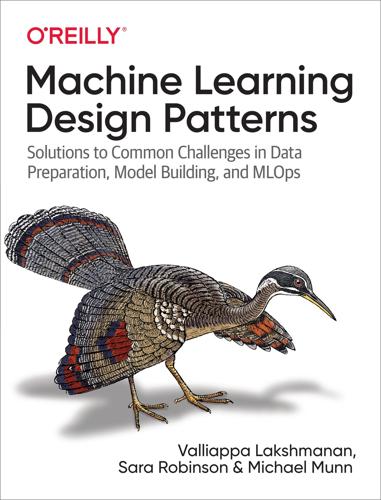
Machine Learning Design Patterns: Solutions to Common Challenges in Data Preparation, Model Building, and MLOps
by
Valliappa Lakshmanan
,
Sara Robinson
and
Michael Munn
Published 31 Oct 2020
This is common for image, video, and text tasks and includes scenarios where it is cost-prohibitive to routinely solve the problem with human experts. Performance of human experts. Detecting eye disease from retinal scans. Have three or more physicians examine each image. Treat the decision of a majority of physicians as being correct, and look at the percentile ranking of the ML model among human experts. Preventive or predictive maintenance. Perform maintenance on a fixed schedule. Preventive maintenance of a car. Bring cars in for maintenance once every three months. The three months is the median time to failure of cars from the last service date. Anomaly detection. 99th percentile value estimated from the training dataset.
…
In medicine, predictive models might be used to assess the risk of a patient developing a chronic disease or predict when a patient might not show up for a scheduled appointment. Other examples include energy forecasting, customer churn prediction, financial modeling, weather prediction, and predictive maintenance. Feature Store Feature Cross Embeddings Ensemble Transform Reframing Cascade Multilabel Neutral Class Windowed Inference Batch Serving IoT analytics is also a broad category that sits within predictive analytics. IoT models rely on data collected by internet-connected sensors called IoT devices.
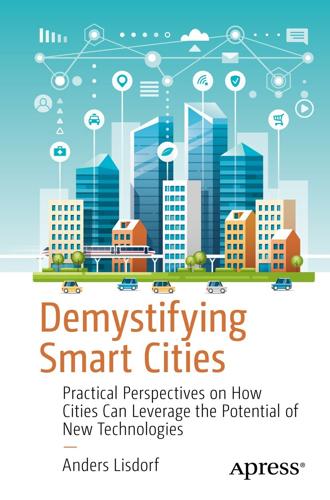
Demystifying Smart Cities
by
Anders Lisdorf
Mobility seems to be one of the most blooming areas of city tech innovation, but there are still two primary areas that form the basis:Public transit – Regardless of the innovations we have considered, in many major cities, public transit is still a key form of mobility. Optimizing how mass transit flows and is utilized is therefore an important way to improve mobility. Since breakdowns in the transit system are often a prime cause of delays, predictive maintenance is another application that improves mobility. Private transit – The personal vehicle has still not died since it is unique in providing the greatest flexibility in terms of mobility. Congestion makes this a challenge for people and goods moving around. Consequently, smart city applications have targeted traffic regulation to avoid congestion.

Human + Machine: Reimagining Work in the Age of AI
by
Paul R. Daugherty
and
H. James Wilson
Published 15 Jan 2018
The fleet includes autonomous drills, excavators, earth movers, driverless trucks, and other equipment deployed at mines that might be thousands of miles away. Data from sensors on various machines is continuously fed into a large database, and AI technology is deployed to analyze that information for valuable insights. Data on the braking patterns of dump trucks, for example, might help predict maintenance problems. But this is hardly an example of pure automation that has replaced humans. The Rio Tinto command center employs a host of data analysts, engineers, and skilled remote operators who work together to manage the large fleet. The data analysts, for instance, analyze information in the database in order to make recommendations to the remote operators.

Bikenomics: How Bicycling Can Save the Economy (Bicycle)
by
Elly Blue
Published 29 Nov 2014
The work has been called one of the first examples of “site-specific” art, relying on its surroundings for its meaning. Wines had intended, he said, that the asphalt would naturally be allowed to deteriorate until the cars were revealed again. Knowing that, the demise of Ghost Parking Lot seems all the more terribly appropriate. Perhaps somewhat predictably, maintenance became a problem over the years. The strip mall’s owners had dealt with this by pouring another, thicker layer of asphalt over the cars. By the time I was old enough to take notice, five cars had been removed, and the rest were square-ish blobs under a layer of pavement, the cars’ details no longer visible.

Strong Towns: A Bottom-Up Revolution to Rebuild American Prosperity
by
Charles L. Marohn, Jr.
Published 24 Sep 2019
Some are prohibited from doing so and, even if they were allowed, it’s very questionable whether society would want local governments hoarding capital. Nonetheless, what this demonstrates is that, for two or three decades, the city was receiving cash from this new development that they were free to spend elsewhere, despite the looming, and easily predictable, maintenance obligation. For cities in need of cash, new growth provides it. In the pattern of development we’re experimenting with today – one that is government-led, spread out, and mostly homogenous across the entire continent – new growth gives a local government decades of free cash flow. That makes it easy to understand the natural reaction of city leadership, as well as American society in general, when those liabilities come due and the insolvency starts to bite: pursue more growth.
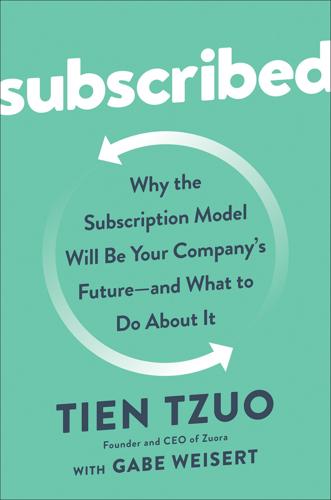
Subscribed: Why the Subscription Model Will Be Your Company's Future - and What to Do About It
by
Tien Tzuo
and
Gabe Weisert
Published 4 Jun 2018
It will enliven inert objects, much as electricity did more than a century ago. Everything that we formerly electrified we will now cognitize.” Heck, eventually our kids won’t be using adjectives like “smart” or “connected” to describe the physical objects in their environment. IoT will be the water they swim in. Everything we make will have predictive maintenance, improved efficiency, better safety, better usability. And everything will be made to order. We won’t be cranking out millions of identical widgets and stacking them up in pallets in overseas factories in order to be shipped around the world anymore. We’ll be customizing objects much closer to home.

The Economic Singularity: Artificial Intelligence and the Death of Capitalism
by
Calum Chace
Published 17 Jul 2016
A bridge, building, plane, car or refrigerator with embedded sensors can let you know when a key component is about to fail, enabling it to be replaced safely without the loss of convenience, money, or life which unforeseen failure might have caused. This is known as condition-based maintenance, or predictive maintenance, and is being pioneered with encouraging results by MTR Corporation which runs Hong Kong’s urban transit network.[cxxxix] The IoT will improve energy efficiency across the economy, as the heating or cooling of buildings and vehicles can be regulated according to their precise temperature, humidity, etc., and the number and needs of the people and equipment using them.

Reinventing Capitalism in the Age of Big Data
by
Viktor Mayer-Schönberger
and
Thomas Ramge
Published 27 Feb 2018
Its founder, Bob, would typically make the decision based on his limited supply of information and on his gut feelings. He might be biased because he loves the look of the shiny new backhoe, or he might fail to see its value beyond daily rental fees. In contrast, a machine learning system would aggregate data from the company’s order book and accounting system, add information about the backhoe’s predicted maintenance cost and local economic trends, and conclude: “I’m sorry, Bob. I’m afraid I can’t support your buying this fantastic Caterpillar machine, although I know it has excellent performance ratings and great reviews in online forums for equipment nerds.” With data-driven machine learning systems up and running, we could end up with thriving firms staffed by fewer managers.

Ten Lessons for a Post-Pandemic World
by
Fareed Zakaria
Published 5 Oct 2020
Although it continues to make elevators, it now finds that its greatest added value is not in charging ever-higher prices for them, but in selling service contracts to maintain them with maximum efficiency. Its smart, software-enabled elevators, which are connected to the cloud, constantly send out performance data, which the company rigorously analyzes and then uses for “predictive maintenance”—repairing a problem before it gets worse. The software is built by Microsoft, which is why Nadella tells the story. Klaus Kleinfeld, when he was CEO of the aluminum company Alcoa, put it this way: “We have furnaces. In the old days, we could improve their efficiency a little bit every few years when we built a new one.
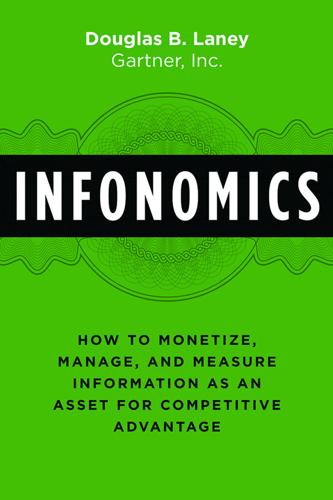
Infonomics: How to Monetize, Manage, and Measure Information as an Asset for Competitive Advantage
by
Douglas B. Laney
Published 4 Sep 2017
After measuring this gap, your objective should be to accelerate its closure and increase the probability that the information actually will be applied in intended ways. Information Vision Gap—The difference between the probable and potential information valuations. This gap appraises how much (or little) vision the organization has concerning how its data is leveraged. For example, even after predictive maintenance systems are put in place, there are identified opportunities to license this data to component suppliers in return for favorable pricing, plus a range of other potential ways to leverage the data. This gap is usually much larger than the performance gap, but also a bit more speculative. So how can you possibly identify all the ways an information asset could possibly be used?
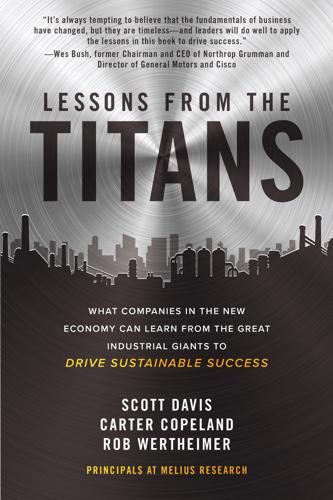
Lessons from the Titans: What Companies in the New Economy Can Learn from the Great Industrial Giants to Drive Sustainable Success
by
Scott Davis
,
Carter Copeland
and
Rob Wertheimer
Published 13 Jul 2020
Put simply, added sensors and technology on production lines bring an increase in visibility and the ability to respond to changes in volume or what’s being made. On top of that, SBD is deploying industrial apps built internally and leveraging what’s been built by others. The goal is full visibility into the production line. Phase two involves predictive analytics and predictive maintenance, i.e., how to look at data in real time now that the factories are all connected. Value stream mapping, a basic tool of Lean, creates a visual map of production, its waste and value creation. It has some simple inputs such as taking a stopwatch and measuring how long it takes to complete a task.
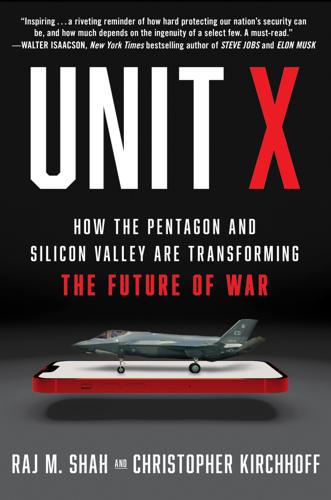
Unit X: How the Pentagon and Silicon Valley Are Transforming the Future of War
by
Raj M. Shah
and
Christopher Kirchhoff
Published 8 Jul 2024
Carter’s vision of enticing Silicon Valley to build products for the military was coming to fruition. We made bets across our five portfolios: artificial intelligence, autonomy, human systems, information technology, and space. In artificial intelligence we were working with a company called C3.ai, whose software predicted maintenance for aircraft, saving the air force millions of dollars and keeping more planes airborne. Our AI team also helped orchestrate an initiative called Project Maven, in which Amazon, Microsoft, and Google were developing computer vision algorithms—computer code that can see—which enhanced the military’s ability to track ISIS fighters.

Super Continent: The Logic of Eurasian Integration
by
Kent E. Calder
Published 28 Apr 2019
IoT allows, for example, the real-time monitoring of goods as well as assets from individual cases to the whole company. It also allows organizations to automate procedures that were previously manual and to optimize how multiple logistics systems work together. Such innovations lead to higher utilization of existing assets, smart inventory management, and high-quality predictive maintenance, as well as accurate end-to-end tracking of high-value goods. East Asian countries, especially China, Singapore, and South Korea, were the early pioneers in containerization, due to their growing economies and to aggressive capital investments just as containerization was emerging as a logistics option.40 Although the first significant use of containerization came in the Atlantic, its major impact on the world economy came through East Asia.

Theory and Practice of Group Psychotherapy
by
Irvin D. Yalom
and
Molyn Leszcz
Published 1 Jan 1967
Nash et al., “Some Factors Related to Patients Remaining in Group Psychotherapy,” International Journal of Group Psychotherapy 7 (1957): 264–75. 88 Yalom, “A Study of Group Therapy Drop-Outs.” 89 I. Yalom and K. Rand, “Compatibility and Cohesiveness in Therapy Groups,” Archives of General Psychiatry 13 (1966): 267–76. P. Sagi, D. Olmstead, and F. Atalsek, “Predicting Maintenance of Membership in Small Groups,” Journal of Abnormal Social Psychology 51 (1955): 308–11. In this study of twenty-three college student organizations, a significant correlation was noted between attendance and group cohesiveness. Yalom and Rand, “Compatibility and Cohesiveness.” This study of cohesiveness, among forty members of five therapy groups found that the members who experienced little cohesion terminated within the first twelve meetings.